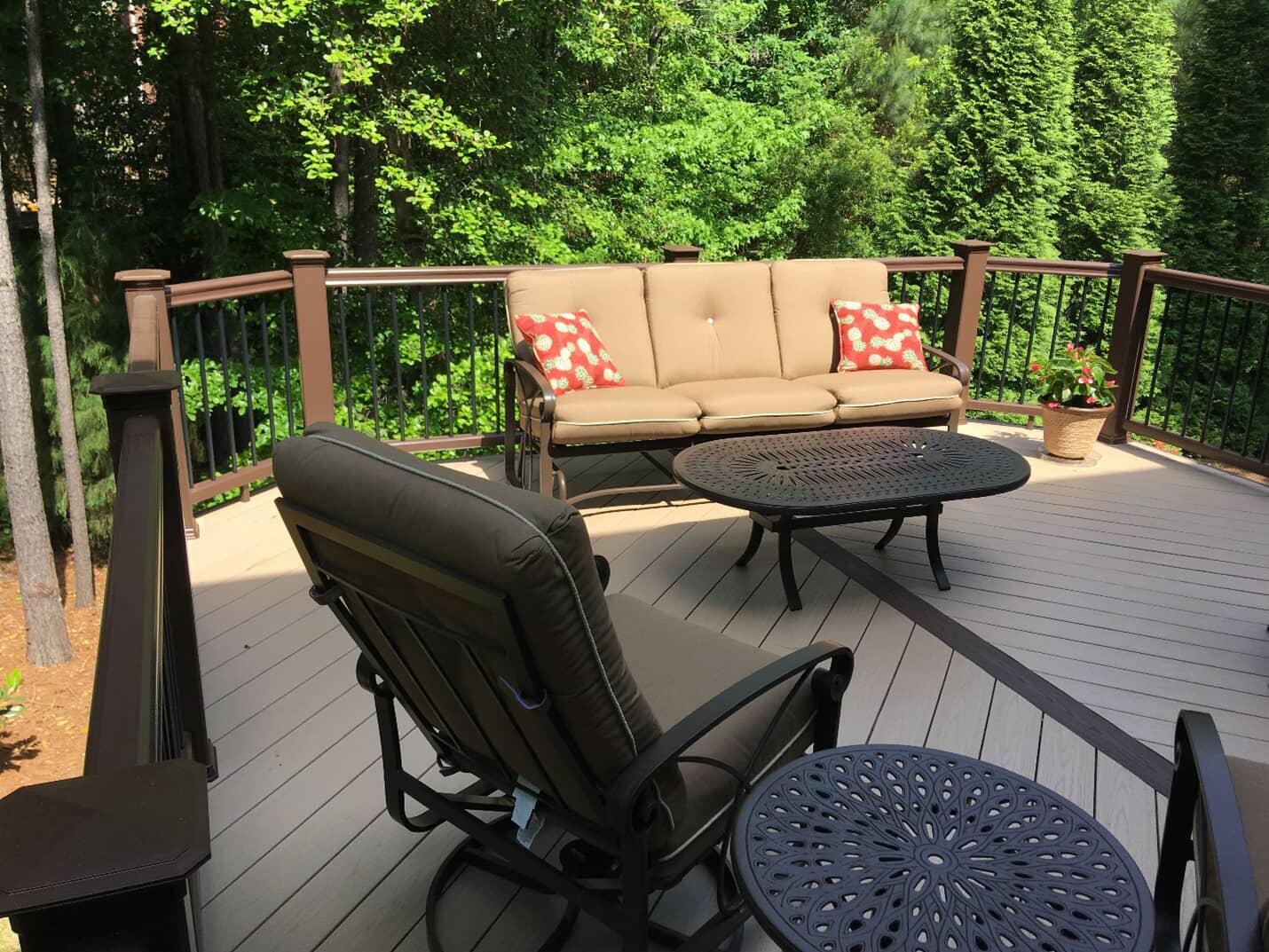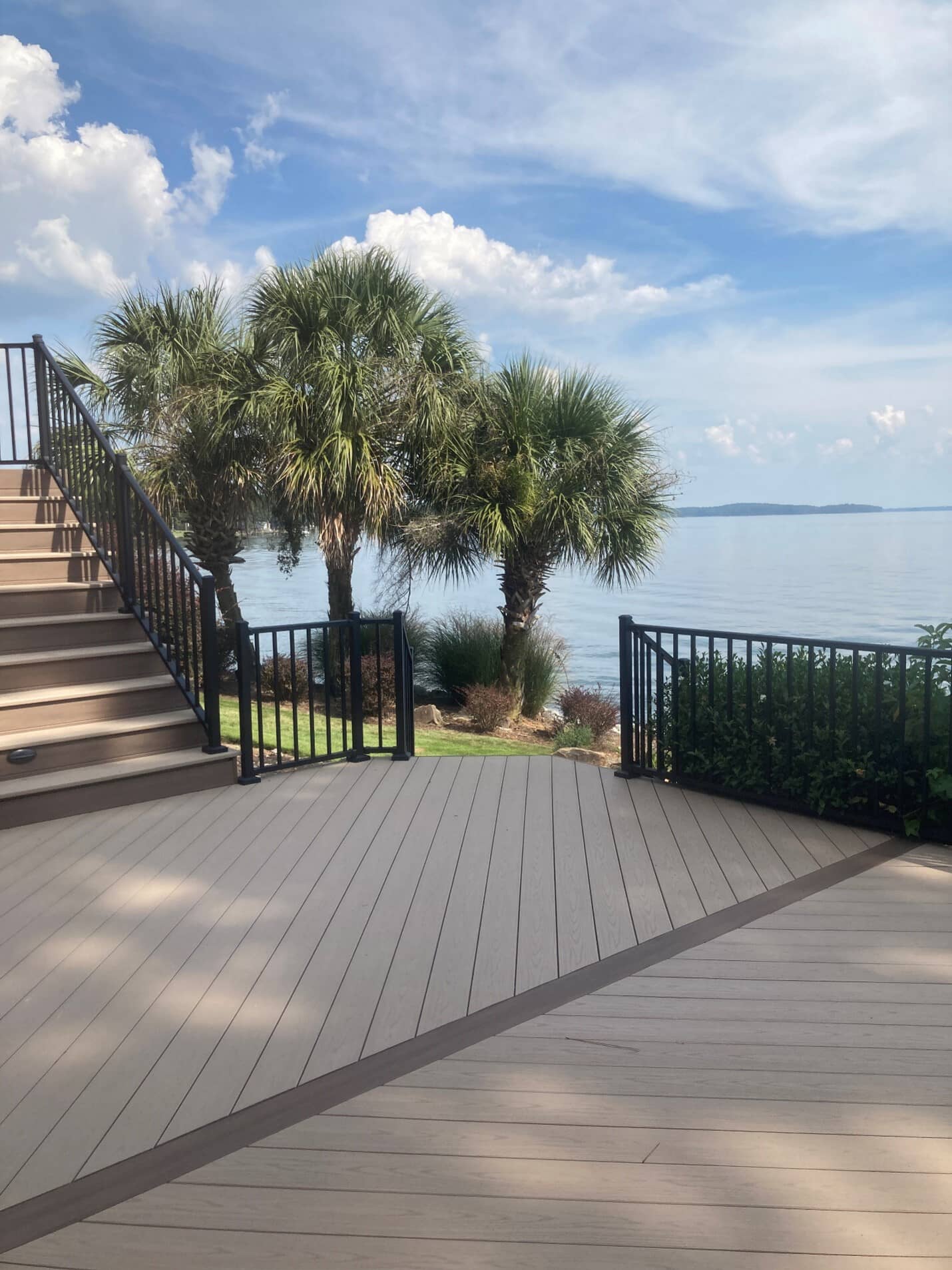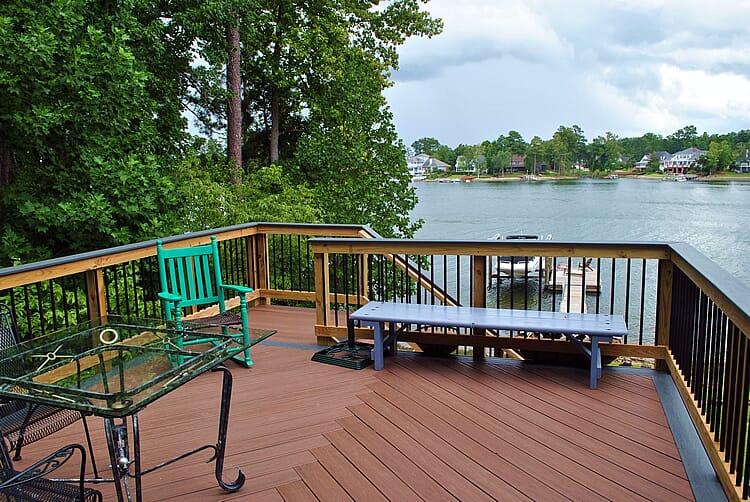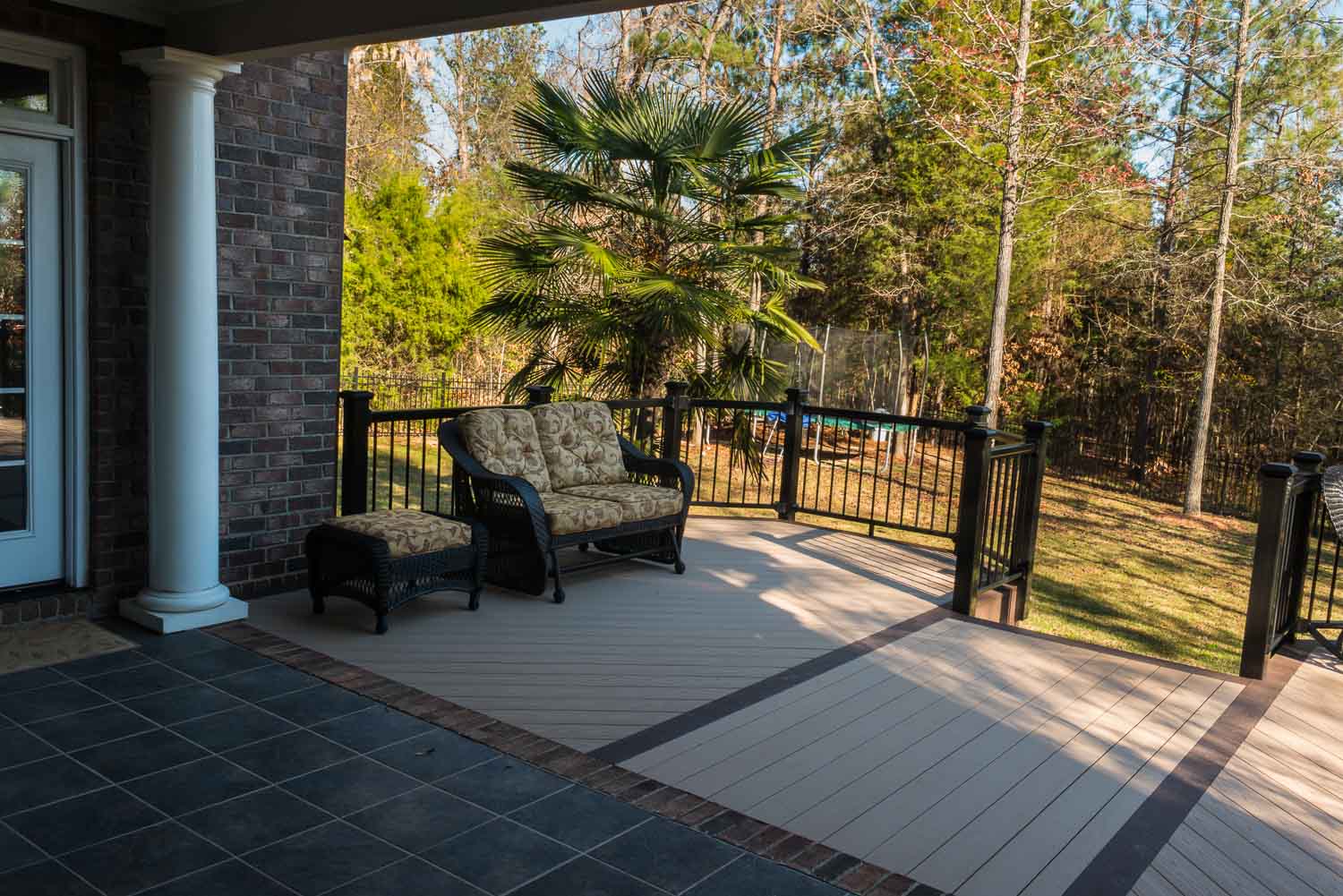It seems like everyone we talk with who is inquiring about a new deck wants to use composite decking for their project. But they don’t always want to pay the extra cost. A 200-square-foot wood deck using clear, pressure-treated 5/4”x6” (high-quality, knot-free, standard-sized) decking boards costs about $14,000 at today’s lumber prices. The same size deck built with an entry-level composite name brand decking board costs around $17,000. The same deck built with a high-end composite board will cost as much as $24,000.

As you may know, lumber prices have risen dramatically in the last two years compared to relatively-stable composite decking prices. The $3,000 cost difference noted above between a wood deck and a composite deck is less now than it has ever been.
Why pay more for composite decking?
So what is the difference? Why pay more for composite decking? There are several reasons. The main reason is product life and wear and tear. A wood deck in our hot South Carolina sun needs to be stained every year if the deck gets direct afternoon sunlight. If it gets more shade than that, staining can be applied every two to three years. Failure to properly protect the deck’s wood surface will result in splitting, cupping and warping that is not reversible. We see many decks where the homeowners have missed a couple years of maintenance (staining), and the result is a deck that is in bad shape.

What does the term “low-maintenance composite decking” mean?
Today’s composite decking materials from the leading suppliers (Trex, TimberTech, AZEK) have warranties ranging from 25 years to lifetime warranties. These low-maintenance products are made of tough, durable materials with PVC coatings that need almost no maintenance. Manufacturers recommend an annual light cleaning with a mild soap and water. So a composite deck never needs staining. Never. That’s why you often see composite decking referred to as low-maintenance decking.

Can composite decking actually be less expensive in the long run?
Let’s do the math, adding the cost to have your wood deck professionally stained every year at $500 each time. The cumulative cost of your wood deck plus staining will exceed the cost of the composite deck in about six years. And that assumes you diligently keep up with the staining. If you forget for a couple years, or simply let it slip off your to-do list, you will be rebuilding your wood deck sooner than planned. Or, worse—living with a deck you are unhappy with. At that point the numbers comparison goes out the window.
Is some composite decking better than others?
What is the difference between entry-level composite decking materials compared to the higher-end composite decking materials? There are several differences in the way they are manufactured, but from the homeowner’s perspective the main difference is look and feel. The more expensive composites have better color variegation and more extensive wood-grain type patterns that make them more attractive. The differences in performance are minimal, and the differences in warranties are not that significant.

Why should you choose Archadeck for your new deck?
At Archadeck of Central South Carolina, we are your composite deck experts. The construction practices involved in building with composite decking materials are different in many ways from building with wood. Some examples include narrower joist spacing, hiding end cuts on stairs and corners, and the use of hidden fasteners. If you choose composite decking, it’s important that you select a contractor that has significant experience with these products. Archadeck is a Trex-Pro builder and a Gold Contractor with TimberTech and AZEK. Contact us to talk with one of our design consultants about whether building a composite deck is right for you.

Marshall Reu, Co-Owner and General Manager
Archadeck of Central South Carolina